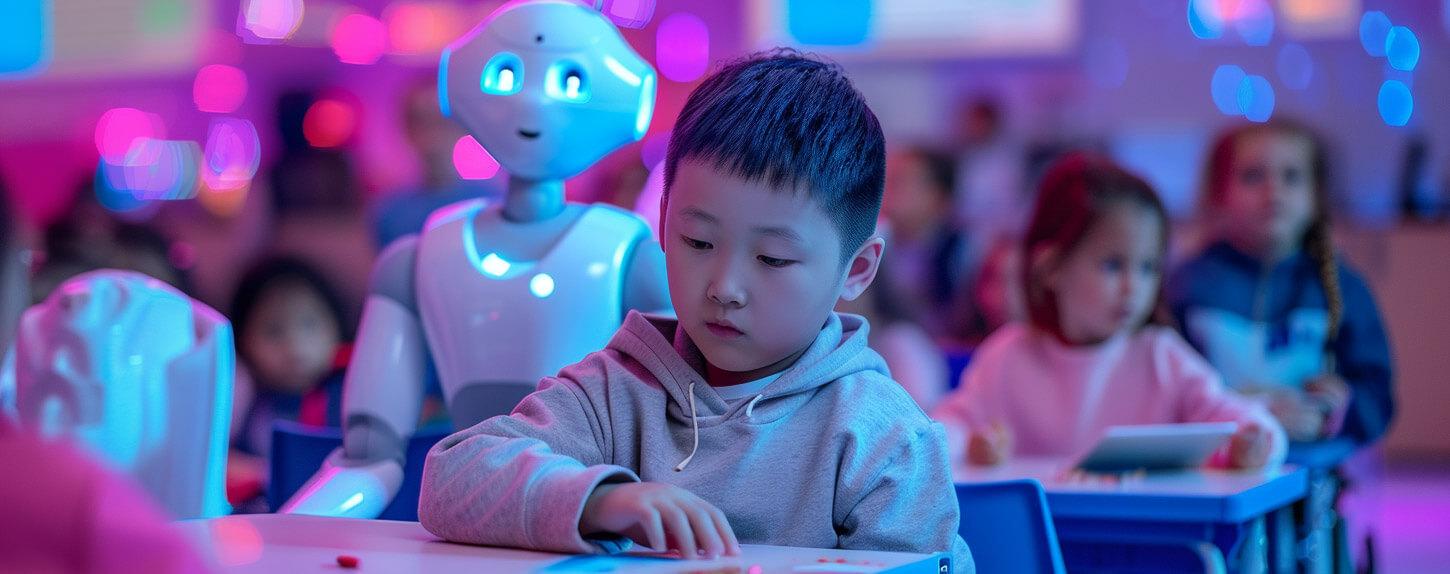How AI Empowers Students with Disabilities: Transforming Accessibility and Support in Education
Education is a right, not a privilege. Yet, for millions of students with disabilities, the traditional classroom presents daily challenges—physical, sensory, cognitive, or emotional. fortunately, the rapid integration of artificial intelligence (AI) in education is unlocking unprecedented opportunities for these learners. This article explores how AI is transforming accessibility and support, ensuring inclusive, equitable, and empowering experiences for students with disabilities worldwide.
The Role of AI in Making Education Accessible
From real-time captioning to personalized learning tools, AI-driven accessibility solutions are reshaping how students with disabilities interact with educational content. Here’s how AI is making a difference:
- Speech-to-text and text-to-speech: AI converts spoken words into written text and vice versa,aiding learners with visual or auditory impairments.
- Adaptive learning platforms: AI-powered tools analyze each student’s performance, adjusting content and delivery to match thier unique needs and pace.
- AI chatbots and virtual assistants: Offering on-demand support, these tools answer questions and guide students through assignments without barriers.
- Image recognition and description: AI identifies and describes images, making visual materials accessible to students with blindness or low vision.
- Real-time captioning and translation: Students who are deaf or hard of hearing benefit from instant subtitles, while multilingual learners gain from automatic translations.
Benefits of AI for students with Disabilities
The application of AI in education goes far beyond convenience. It breaks down critical barriers, offering both practical and psychological advantages for students with disabilities:
- Independence and Confidence
AI-powered tools enable students to work autonomously, fostering a sense of independence and boosting self-esteem.
- Personalized Learning
Adaptive AI tailors content, pace, and support to fit each student’s strengths and challenges, enhancing engagement and outcomes.
- Real-time Support
On-demand AI assistance helps bridge gaps without waiting for human intervention, reducing frustration and keeping learners on track.
- Improved Dialog
AI-driven translation and communication platforms open new channels between students, teachers, and peers, regardless of language or ability barriers.
- Equitable Participation
With AI leveling the playing field,students with disabilities participate more fully in activities,discussions,and assessments.
AI Tools Transforming Accessibility in Education
explore some innovative AI-powered tools supporting students with disabilities in classrooms and beyond:
- Microsoft Immersive reader: Breaks text into manageable chunks, offers read-aloud options, and adjusts font size and background colors for accessibility.
- Google Live Transcribe: Provides real-time speech-to-text captioning, vital for deaf or hard of hearing students.
- Seeing AI by microsoft: Narrates the world for the visually impaired by describing people, objects, and even text in real time.
- otter.ai: Offers accurate, AI-driven transcription of lectures and meetings for easy note-taking.
- Voiceitt: Translates non-standard speech patterns for people with speech impairments,fostering better communication.
real-Life Case Studies: AI Empowering Students
To illustrate the transformative power of AI for inclusive education, here are some inspiring stories:
Case Study 1: Smart Captioning in Higher Education
Sarah, a college student who is hard of hearing, struggled to follow lectures—until her university adopted AI-driven captioning tools. Now, with real-time captions projected during classes, Sarah participates fully in discussions and reviews transcript notes at her own pace.
Case Study 2: AI Reading Support for Dyslexia
A middle school adopted an AI-based reading companion for students with dyslexia. The tool’s personalized text highlighting, syllable segmentation, and predictive diction analysis allowed students to develop reading skills faster, transforming their academic confidence and performance.
Case Study 3: visual Assistance Through Computer Vision
When emily, a visually impaired student, received a wearable AI device capable of describing her surroundings and reading textbooks aloud, her independence in navigating campus and completing assignments soared.
Practical Tips for implementing AI Accessibility tools
For schools, educators, and families looking to integrate AI into their accessibility strategy, consider these best practices:
- Assess individual needs: Collaborate with students and specialists to identify the most beneficial AI tools.
- Encourage student feedback: Gather ongoing input from users to refine tool adoption and maximize comfort and usability.
- promote digital literacy: Offer training for both students and staff to build familiarity and confidence in using AI-based technology.
- prioritize privacy and security: Select tools with robust data protection features, ensuring compliance with legal standards like GDPR and FERPA.
- Blend with human support: While AI enhances independence, maintain access to human educators, teaching assistants, and therapists for holistic support.
Overcoming Challenges and Looking Ahead
As with any technology, the integration of AI in accessible education brings its own set of challenges.these include affordability,tech infrastructure,training needs,and the necessity to prevent bias in AI algorithms. Ongoing collaboration between developers, educators, students, and disability advocates is crucial to developing fair, inclusive, and user-kind AI solutions.
The future is promising: AI continues to evolve, with innovations like emotion detection, bright tutoring, and personalized content delivery on the horizon. These advances will unlock even more ways for students with disabilities to thrive academically and personally.
conclusion: AI as a Catalyst for Inclusive Education
AI is revolutionizing accessibility and support in education, breaking down barriers and unlocking new possibilities for students with disabilities. With the right tools, guidance, and commitment to inclusion, educators can empower every learner to achieve their fullest potential.
Embracing AI-driven solutions for students with disabilities is not just about technology—it’s about building a future where accessible, equitable, and meaningful education is the norm, not the exception.

